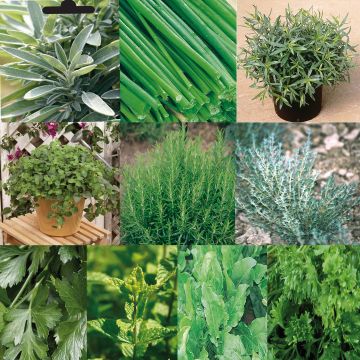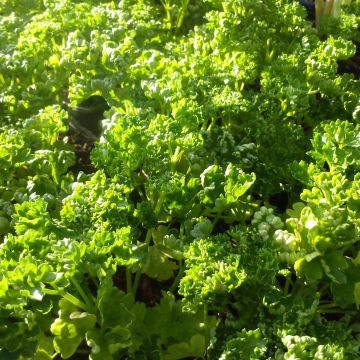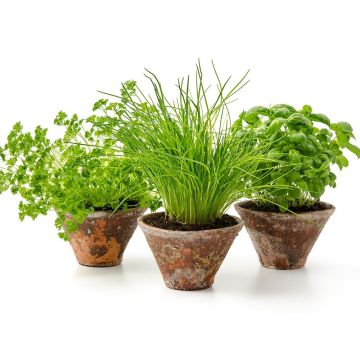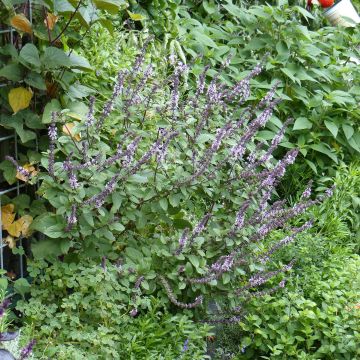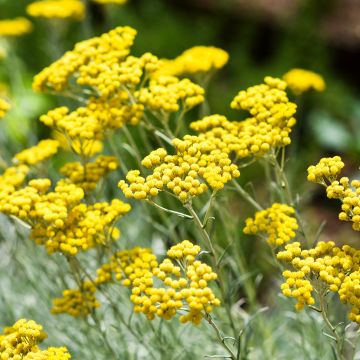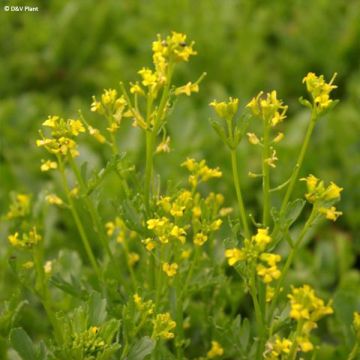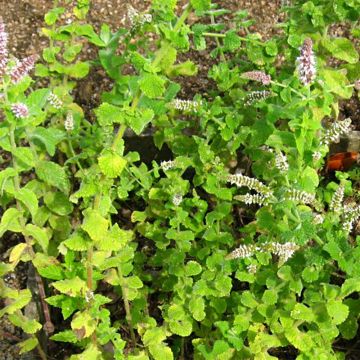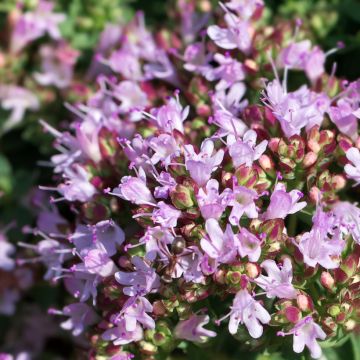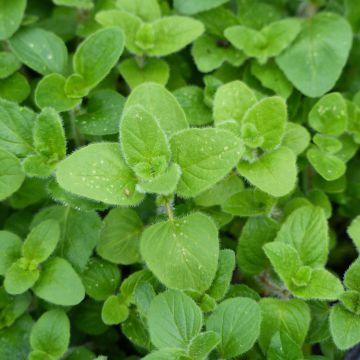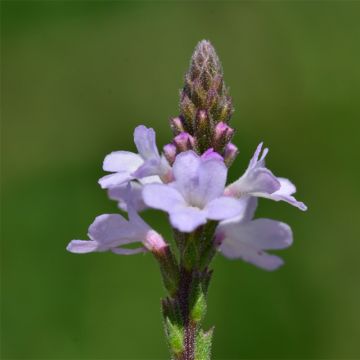

Red Beetroot Nobol plugs - Beta vulgaris
Red Beetroot Nobol plugs - Beta vulgaris
Beta vulgaris Nobol
Beet, Beetroot
Everything perfect, fast delivery, lovely young plant, beautiful growth and delicious beetroot.
Murielle, 11/12/2024
Why not try an alternative variety in stock?
View all →This plant carries a 6 months recovery warranty
More information
We guarantee the quality of our plants for a full growing cycle, and will replace at our expense any plant that fails to recover under normal climatic and planting conditions.
From €5.90 for pickup delivery and €6.90 for home delivery
Express home delivery from €8.90.

Description
The 'Nobol' red beet is an improved variety of the Globe type, producing beautiful round and fleshy roots with smooth skin and dark red, homogeneous and sweet flesh. It is a vigorous and productive variety. Beetroots are consumed cooked (in salads, mousses, verrines...) or raw, grated and mixed with other raw vegetables. The plants of this variety are planted from April to June, after the last frost, for a harvest from July to October.
The beetroot is a root vegetable from the Chenopodiaceae family. Usually consumed cooked and cut into cubes, beetroot can also be used in mousses or verrines. Raw, it can be grated and mixed with other raw vegetables. As for the dark red, veined leaves are deliciously prepared in a mesclun or like spinach. There are many varieties of beetroot, producing vegetables with round, elongated or flat shapes and often red but sometimes yellow, pink or white.
In the vegetable garden, beetroot thrives in sunny or semi-shaded exposures. It likes fresh, well-drained and moderately rich soils.
Harvesting: Beetroots are harvested when the root is large enough (about 10 cm (4in)), from July onwards and as needed until October.
Storage: Harvest the beetroots and let them dry on the ground in the sun for a day. Cut the leaves 1 cm (0in) above the collar, brush the beetroots if necessary, and store them in a cool and dark place, ideally under a layer of dry sand. Beetroots are perfectly suited for long-term storage.
Gardener's tip: Beetroots like the company of lettuces, onions, and cabbages. However, they do not appreciate being near leeks or spinach.
Report an error about the product description
Harvest
Plant habit
Foliage
Other Vegetable plants A to Z
Planting and care
Beetroot thrives in moist, well-drained and moderately rich soil. A compost application can be done in autumn or spring. Choose a sunny or semi-shaded location. Indeed, beetroot likes light but not excessive heat.
Initially, allow the plants to grow by transplanting the seedlings into trays or pots with a diameter of 8 to 13 cm (3 to 5in) filled with compost. Place them in a bright area. Water regularly.
Planting in the open ground should be done from mid-May to June when the risk of frost has passed and the soil is sufficiently warmed. Soak the root ball in water for a few moments before planting. Space the plants 30 cm (12in) apart between rows and 20 cm (8in) within the row. Dig a hole, place the root ball and cover it with fine soil. Water generously.
Mulch around the plants only in case of drought.
During cultivation, water moderately, mainly during hot and dry weather.
Regularly hoe and weed around the base of the plants.
Cultivation
Care
Intended location
-
, onOrder confirmed
Reply from on Promesse de fleurs
Vegetable plants
Haven't found what you were looking for?
Hardiness is the lowest winter temperature a plant can endure without suffering serious damage or even dying. However, hardiness is affected by location (a sheltered area, such as a patio), protection (winter cover) and soil type (hardiness is improved by well-drained soil).

Photo Sharing Terms & Conditions
In order to encourage gardeners to interact and share their experiences, Promesse de fleurs offers various media enabling content to be uploaded onto its Site - in particular via the ‘Photo sharing’ module.
The User agrees to refrain from:
- Posting any content that is illegal, prejudicial, insulting, racist, inciteful to hatred, revisionist, contrary to public decency, that infringes on privacy or on the privacy rights of third parties, in particular the publicity rights of persons and goods, intellectual property rights, or the right to privacy.
- Submitting content on behalf of a third party;
- Impersonate the identity of a third party and/or publish any personal information about a third party;
In general, the User undertakes to refrain from any unethical behaviour.
All Content (in particular text, comments, files, images, photos, videos, creative works, etc.), which may be subject to property or intellectual property rights, image or other private rights, shall remain the property of the User, subject to the limited rights granted by the terms of the licence granted by Promesse de fleurs as stated below. Users are at liberty to publish or not to publish such Content on the Site, notably via the ‘Photo Sharing’ facility, and accept that this Content shall be made public and freely accessible, notably on the Internet.
Users further acknowledge, undertake to have ,and guarantee that they hold all necessary rights and permissions to publish such material on the Site, in particular with regard to the legislation in force pertaining to any privacy, property, intellectual property, image, or contractual rights, or rights of any other nature. By publishing such Content on the Site, Users acknowledge accepting full liability as publishers of the Content within the meaning of the law, and grant Promesse de fleurs, free of charge, an inclusive, worldwide licence for the said Content for the entire duration of its publication, including all reproduction, representation, up/downloading, displaying, performing, transmission, and storage rights.
Users also grant permission for their name to be linked to the Content and accept that this link may not always be made available.
By engaging in posting material, Users consent to their Content becoming automatically accessible on the Internet, in particular on other sites and/or blogs and/or web pages of the Promesse de fleurs site, including in particular social pages and the Promesse de fleurs catalogue.
Users may secure the removal of entrusted content free of charge by issuing a simple request via our contact form.
The flowering period indicated on our website applies to countries and regions located in USDA zone 8 (France, the United Kingdom, Ireland, the Netherlands, etc.)
It will vary according to where you live:
- In zones 9 to 10 (Italy, Spain, Greece, etc.), flowering will occur about 2 to 4 weeks earlier.
- In zones 6 to 7 (Germany, Poland, Slovenia, and lower mountainous regions), flowering will be delayed by 2 to 3 weeks.
- In zone 5 (Central Europe, Scandinavia), blooming will be delayed by 3 to 5 weeks.
In temperate climates, pruning of spring-flowering shrubs (forsythia, spireas, etc.) should be done just after flowering.
Pruning of summer-flowering shrubs (Indian Lilac, Perovskia, etc.) can be done in winter or spring.
In cold regions as well as with frost-sensitive plants, avoid pruning too early when severe frosts may still occur.
The planting period indicated on our website applies to countries and regions located in USDA zone 8 (France, United Kingdom, Ireland, Netherlands).
It will vary according to where you live:
- In Mediterranean zones (Marseille, Madrid, Milan, etc.), autumn and winter are the best planting periods.
- In continental zones (Strasbourg, Munich, Vienna, etc.), delay planting by 2 to 3 weeks in spring and bring it forward by 2 to 4 weeks in autumn.
- In mountainous regions (the Alps, Pyrenees, Carpathians, etc.), it is best to plant in late spring (May-June) or late summer (August-September).
The harvesting period indicated on our website applies to countries and regions in USDA zone 8 (France, England, Ireland, the Netherlands).
In colder areas (Scandinavia, Poland, Austria...) fruit and vegetable harvests are likely to be delayed by 3-4 weeks.
In warmer areas (Italy, Spain, Greece, etc.), harvesting will probably take place earlier, depending on weather conditions.
The sowing periods indicated on our website apply to countries and regions within USDA Zone 8 (France, UK, Ireland, Netherlands).
In colder areas (Scandinavia, Poland, Austria...), delay any outdoor sowing by 3-4 weeks, or sow under glass.
In warmer climes (Italy, Spain, Greece, etc.), bring outdoor sowing forward by a few weeks.




































